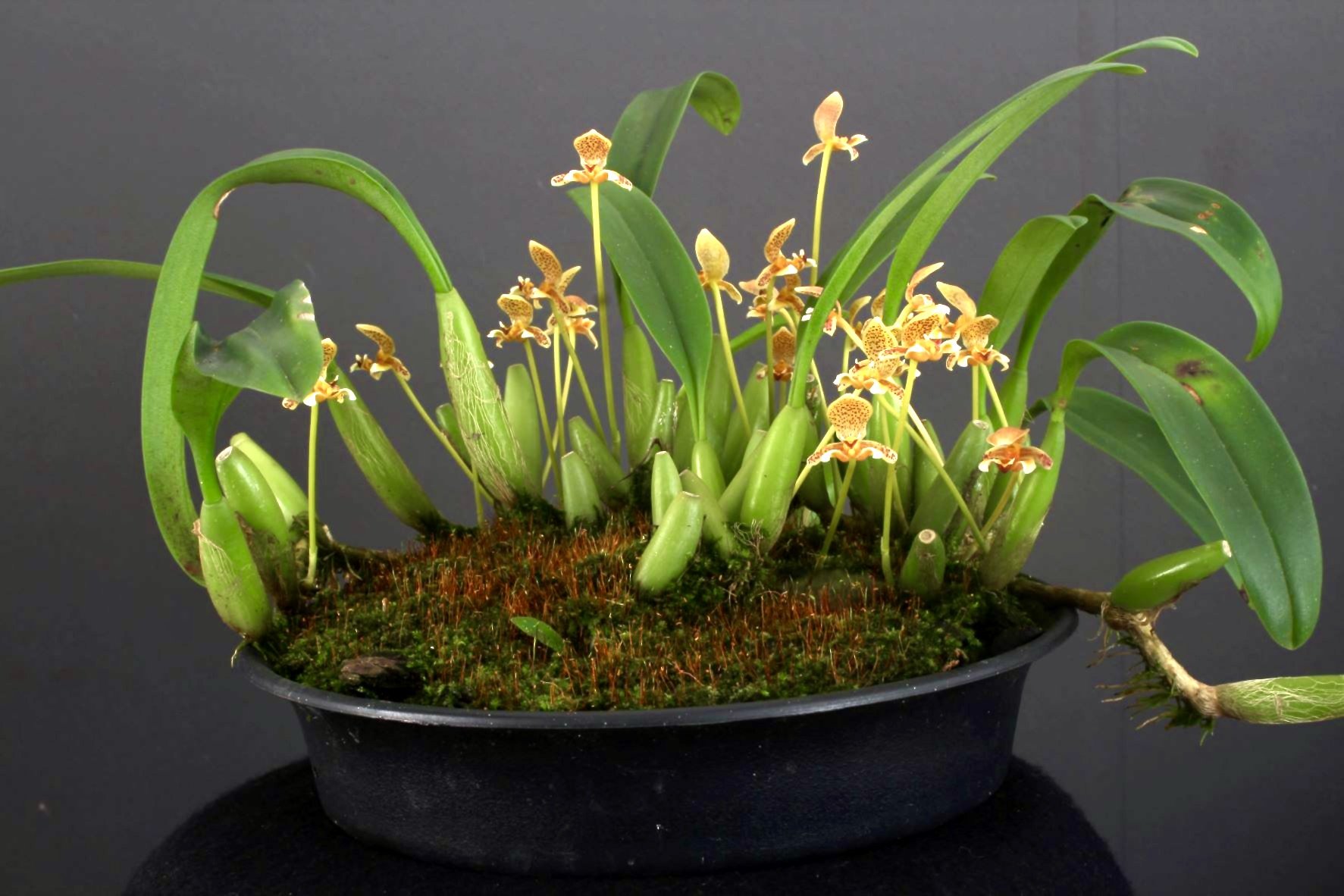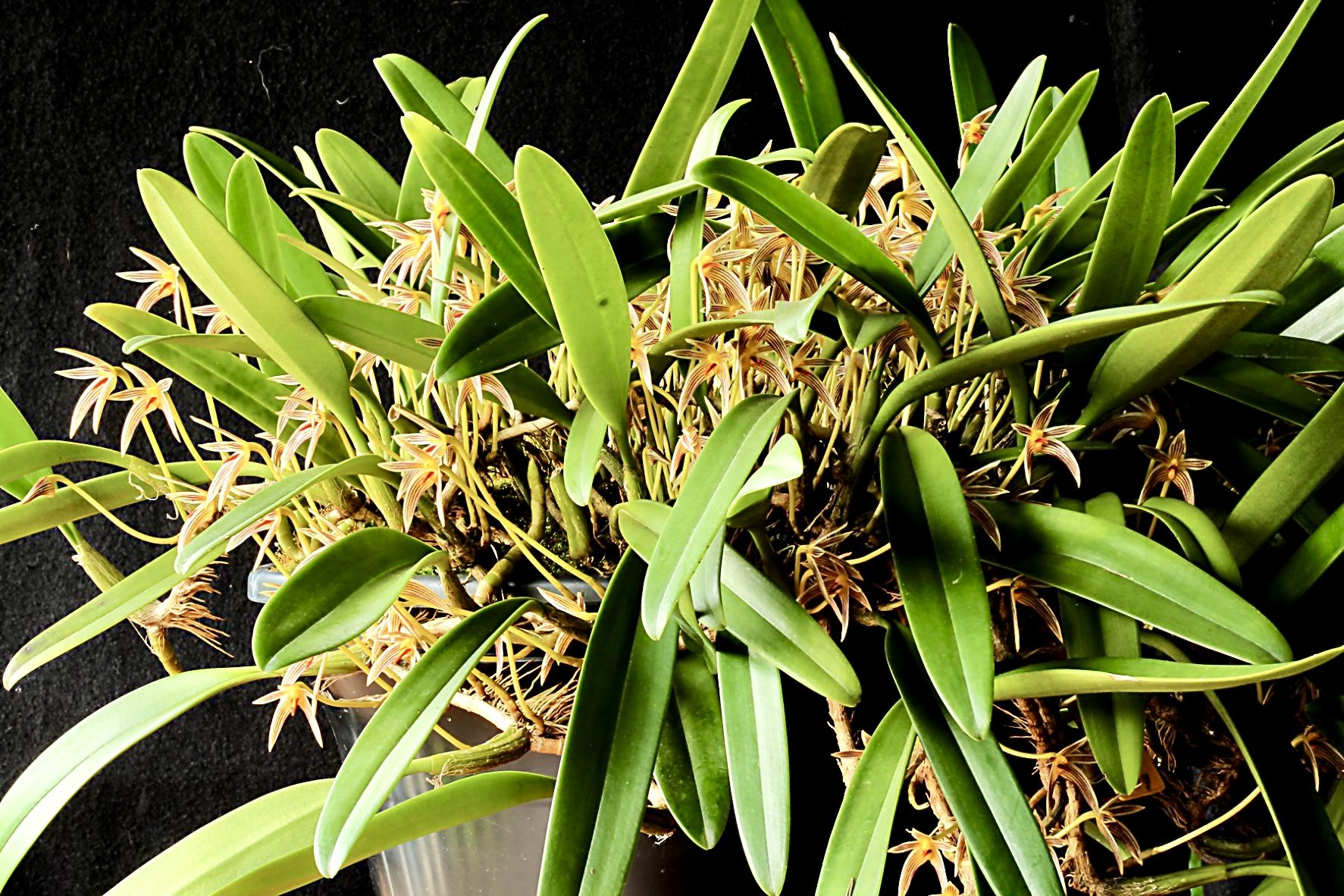Bulbophyllum Orchids
This article about growing Bulbophyllum Orchids on the Sunshine Coast was written by Nambour Orchid Society member, Alison, and originally shared in our monthly newsletter.
Pronunciation bulb-oh-FILL-um
Tribe: Dendrobieae
Subtribe: Bulbophyllinae
Described by Louis-Marie Aubert Du Petit-Thouars in 1822
Many years ago, in our early orchid growing days we took a plant of Bulbophyllum rothschildianum for display to the Gympie Orchid show for the late Ed McKane. It was on a shade cloth mount filled with mix that he called a sock, with flowers all around the mount. Being very new growers, we were nervous about breaking off flowers on the way to Gympie, so we suspended it from the roof of the van with ties out to each side so it couldn’t move. The plant made it and won champion species at the show. I have blamed Ed for my Bulbophyllum addiction ever since and still have two large tank strainers full of that same plant.
Bulbophyllum orchids, also known as “Bulbos,” are the largest genus of orchids with 3353 currently listed on the Kew WCSP list and 471 registered Hybrids on Orchid Wiz. They are named for their bulbous leaves and have an incredible range of flower shapes and colours. This is what attracted me to them in the first place as I was looking for something different to grow and at the time very few were seen at meetings and shows on the Sunshine Coast, not realising of course that it was a very large Genus that quickly took over my life.
Bulbophyllum pteroglossum
Taxonomists have described at least two dozen allied genera, which have been combined with, and separated from, Bulbophyllum, over the years. Some of the most commonly encountered allied genera are; Cirrhopetalum,Mastigion, Megaclinium, Trias and Macrobulbon. The plants are typically small to medium (although some have leaves up to a metre long) creeping epiphytes, (sometimes untidy) having a sympodial growth habit with prominent pseudobulbs, with one or two fleshy leaves. There is a wide range of fantastic flower shapes and sizes from about 2mm up. All have a hinged lip that aids in pollination. The pollinator (often a small fly) lands on the lip, which tilts and causes the pollinator to fall back in to the sticky pollina. The flowers usually only last 5-7 days and are often fowl smelling. Predominately tropical or subtropical, although the range can extend into temperate regions. Several hundred species are found in Africa and the island of Madagascar. Most are found in Asia; ranging from the foothills of the Himalayas, down through Southeast Asia, Malaysia, the Philippines, Indonesia (especially Java, Borneo, Sumatra, Sulawesii), New Guinea, Australia, and New Zealand. The island of New Guinea, which has at least 600 species, is believed to be the dissemination point for the genus. Since Bulbophyllum species are a very diverse and wide-ranging group of orchids, only general culture suggestions can be given.
Bulbophyllum affine
Living on the Sunshine Coast in Queensland, I grow mine in a bark, perlite and coconut chunk mix, mostly in saucers but I do grow some of the deeper root ones e.g., lobbii, echinolabium in port pots for a bit extra depth. This helps with the moisture content as Bulbos love moisture. They grow under 70% shade with an extra layer added in the summer. Always a challenge where we live as it is in a hollow at the bottom of the hill and we do miss a lot of the breezes. We get the cold in the Winter, down to about 3or 4C and summer up to mid 40C so plenty of misting to keep them happy on those hot days. If you have not yet tried a few Bulbos they are well worth the effort as some do put out new flowers quite regularly.
Author: Alison P

